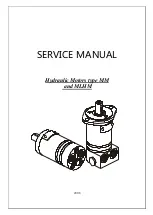
4. Regular inspection
48
3) If the measurement result is below 0.3, replenish anti-
corrosion additives (DCA4). If it is above 0.8 or, drain
a little coolant and then add clean tap water to adjust
the concentration.
Discharging the coolant
The coolant can be discharged as follows.
1. Make sure that engine and radiator are cooled.
2. Open the radiator cap.
3. Loosen the drain valve which is located under the
radiator to discharge the coolant.
DV2213011A_E
4. Disassemble the coolant discharge plug of the cylinder
block, and discharge it to a container.
DV2213012A
5. Drain cooling water in the oil cooler.
DV2213167A
1) Loosen the drain plug(A) of the oil cooler cover and
then drain cooling water.
CAUTION
•
If the color on the test sheet does not match the
color of the standard color table, find a middle
color on the standard color table. For example, if
the color of (C) of the test sheet matches D and
F on the NITRITE of the standard color table,
select E.
•
To prevent corrosion inside of the engine cooling
unit, drain the coolant and replace it with new
coolant once a year.
DANGER
•
Never open the radiator cap while the engine is
overheated. If the radiator cap is opened while
the engine is overheated, hot water will spurt out
and may cause serious burns. Open the radiator
cap after ensuring that the engine has been
cooled sufficiently.
•
Mark and separately manage the containers for
storing coolant from beverage containers to avoid
confusion. If coolant is ingested, see a doctor
immediately.
Drain valve
A
















































